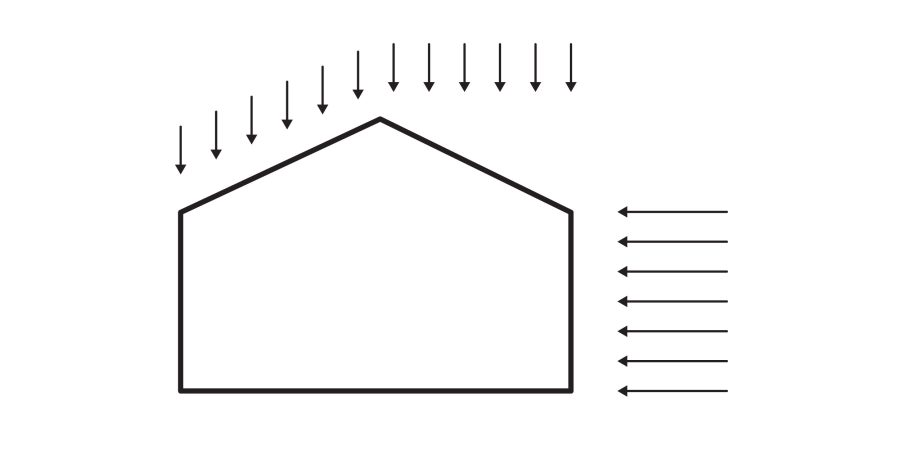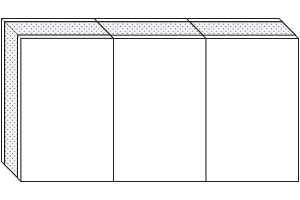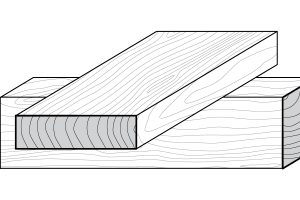Introduction
All building loads are based on mathematical modeling, successful experience in the past, and the probability a situation would occur in the future. The minimum requirements to use in calculations are documented in the Building Code. The code will give live loads, wind values, and other special circumstances like earthquake requirements. Occasionally, special situations may require custom load determinations from engineers.
- Most loads are static, however, dynamic loads like wind are assumed to be static in order to make the calculations easier.
- PSF = Pounds Per Square Foot
Worst Case
All values are always based on the worst case scenario expected.
- Example: 40 PSF is highly unlikely to ever occur simultaneously on every square foot of a house, but it provides an allowance for safety, tolerances, and unusual circumstances.
Gravity Loads
Dead Loads
The vertical loads due to the weight of a building and any permanent equipment. Essentially permanent loads to be continuously expected on the building.
- Includes: Beams, exterior and interior walls, floors, and mechanical equipment
- Dead loads of structural members cannot always be figured out easily because the weight depends on the size, but the size depends on the weight. Initially the weight is assumed based on rough calculations.
Live Loads
Those imposed on a building by the building’s particular use and occupancy. They are generally considered moveable or temporary.
- Includes: People, furniture, moveable equipment.
- Note: Environmental Loads like wind, earthquake and snow loads are not considered live loads.
- The code also requires design for Concentrated Loads. These are loads that may occur anywhere Concentrated to a 2 ½ SF space (~1.6’ square).
Exceptions
Many codes offer lots of exceptions for loads on buildings and calculations. An example, if the live load is less than 100 PSF, and the space is not a Public Assembly Space or Parking Garage, a reduction in the loading may be allowed. Reference your code for all deductions.
Environmental Loads
Environmental loads are those imposed by the environment, like wind, earthquake, and snow. Snow load needs to be calculated per location typically, while wind and earthquake will be given by local jurisdictions. As mentioned before, wind loads which are dynamic, are considered static to make calculations easier.
Deflection Limits
Deflection limits are the amount a structural element can move under a load without causing damage. They are set by building codes and are usually expressed as a fraction of the clear span in inches over a given number.
Specifications can make more strict deflection limitations.





Leave a Reply
You must be logged in to post a comment.